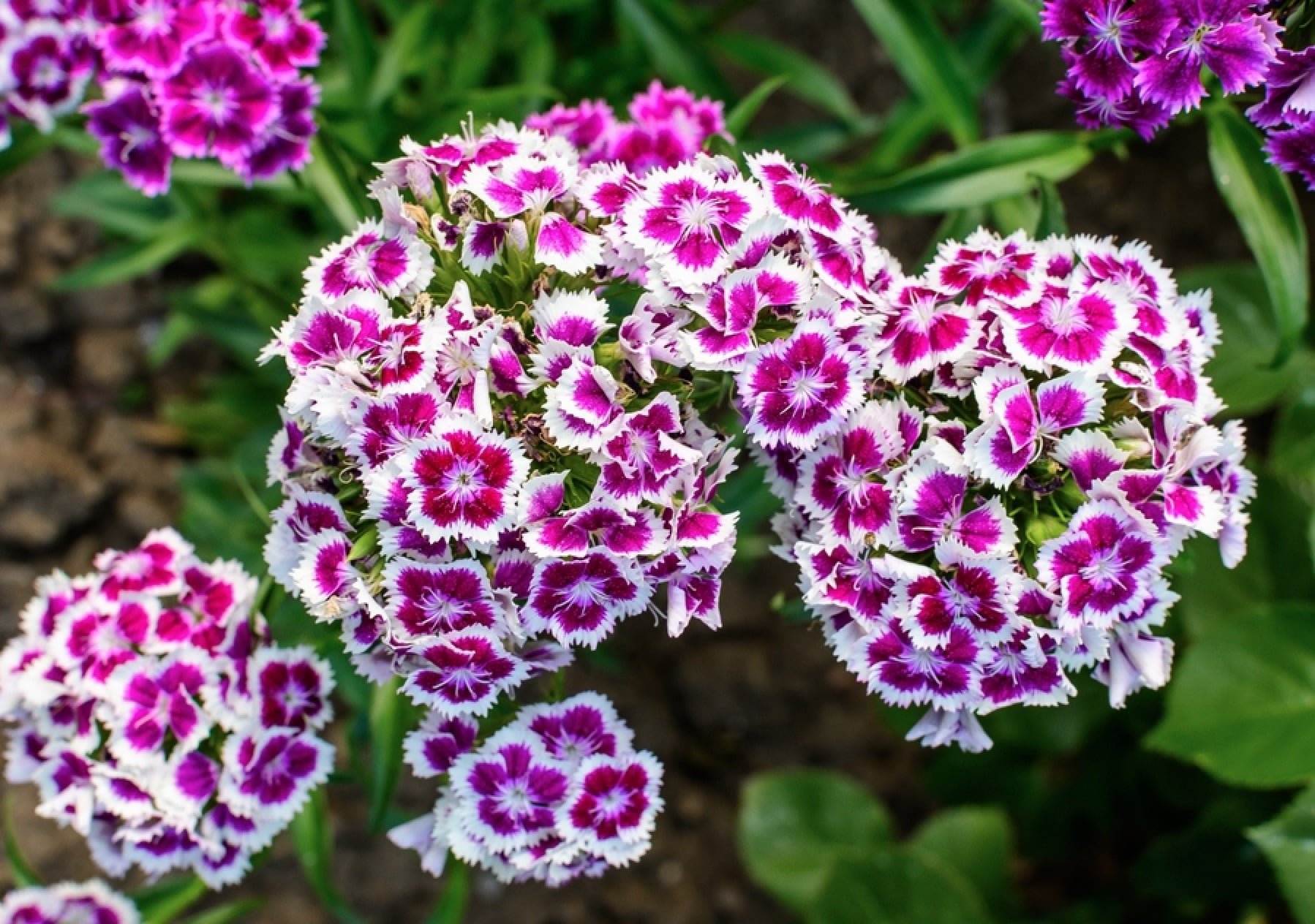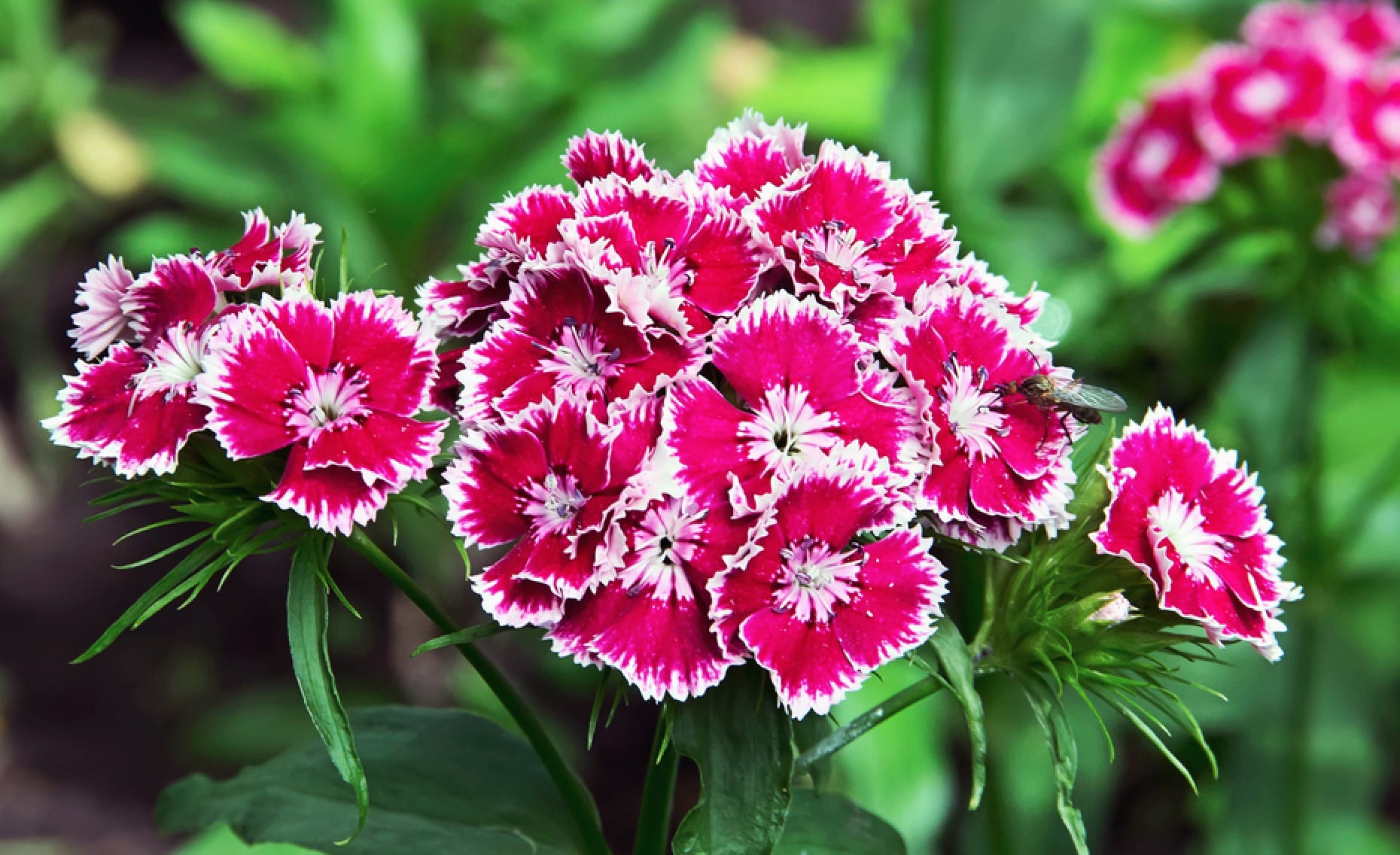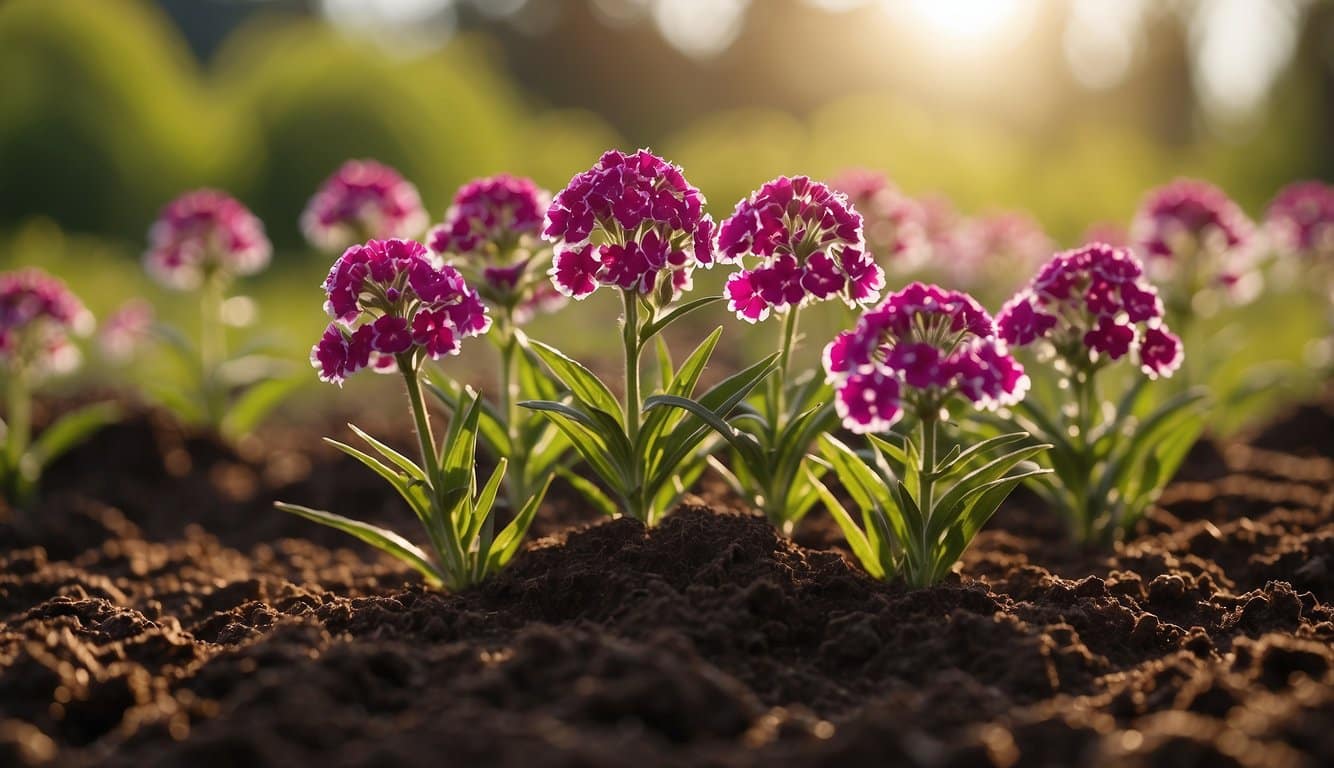| Question | When to Plant Sweet William? |
|---|---|
| Answer | Seeds: Late summer to early fall in cooler climates; late winter to early spring in warmer climates. Seedlings: Spring after frost, or early fall. |
| More Info |
|
Sweet William (Dianthus barbatus) can be planted at different times depending on your climate and whether you’re starting with seeds, seedlings, or mature plants.
- Seeds: In cooler climates, sow Sweet William seeds outdoors in late summer to early fall, allowing them to germinate and establish before winter. This timing ensures blooms in the following spring or summer. In warmer climates, seeds can be sown in late winter to early spring for blooms in late spring to early summer.
- Seedlings or Young Plants: Plant these in the garden in spring after the risk of frost has passed, or in early fall. Fall-planted Sweet William will have a head start and bloom earlier the following year.
Sweet William prefers well-drained soil and full to partial sun. It’s known for its tolerance to cold and can overwinter in most climates, making it a versatile choice for gardeners.
Introduction to Sweet William Planting
Sweet William, known botanically as Dianthus barbatus, is a charming and popular flower treasured for its vibrant colors and pleasant fragrance. It’s a member of the pink family, related to both garden pinks and carnations.
Cultivated since the 16th century, Sweet William has a timeless allure that endures in gardens today.
Sweet William planting times vary with climate:
- Hot Climates: In warmer regions, Sweet William should be planted in winter.
- Cool Climates: Gardeners in cooler areas should opt for spring or summer planting.
Soil Requirements:
| Property | Requirement |
|---|---|
| Soil Moisture | Moist, yet well-drained |
| Soil Type | Neutral to slightly alkaline pH |
It’s essential for gardeners to ensure that the soil is in the appropriate condition to promote healthy growth.
Utilizing a balance of moisture while avoiding waterlogged conditions is key to success with this species.
Planting Depths and Spacing:
- Seeds: Lightly cover with 1/8 inch (0.6 cm) of soil.
- Spacing: Maintain a distance of 6 inches (15 cm) between plants.
This spacing is crucial to reduce the risk of rot and disease due to overcrowding.
By adhering to these guidelines and considering the specific needs and characteristics of Sweet William, gardeners can look forward to vibrant, sweetly fragrant blooms in their garden.
Optimal Planting Times
Choosing the right time to plant Sweet William is essential for a robust bloom. Specific times vary by region and season, taking into account climate variations and temperature preferences of the plant.
By Region
Temperate Climates:
- Winter to Spring: Planting is ideal as the mild weather supports seed germination and early growth.
Hot Climates:
- Winter: This is the best time to plant to avoid the scorching summer temperatures that can impede blooming.
Cool Climates:
- Spring to Summer: Cooler summer temperatures provide a suitable environment for Sweet William to thrive.
By Season
Spring:
- Ideal for most regions, soil temperatures should be consistently warm to promote germination.
Summer:
- In cooler climates only, where temperatures do not soar too high, Summer planting is feasible.
Fall:
- Not typically recommended due to the impending cold, except in mild winter regions where the plant can establish itself before frost.
Preparing for Planting
Before placing seeds into the earth, gardeners should ensure optimal conditions for Sweet William to flourish. Proper soil preparation and selecting the ideal site are the cornerstones for a successful bloom.
Soil Preparation
Sweet William thrives in moist, yet well-drained soil. The gardener should aim to achieve a balance where water is adequate but not excessive, ensuring roots do not sit in water.
Incorporating organic matter such as compost can enhance soil fertility and texture.
A pH between 6.0 and 7.0 is ideal for Sweet William, so it may be necessary to adjust the soil pH accordingly.
Before planting:
- Test soil pH: Use a soil test kit to determine if adjustments are needed.
- Amend the soil: Apply lime to raise pH or sulfur to lower pH if necessary.
- Enrich the soil: Work well-rotted compost or peat moss into the soil to improve its structure and nutrient content.
Site Selection
Choosing an appropriate planting site is paramount for the health and vibrancy of Sweet William. These flowers require an area that receives full sun to partial shade.
They fare better in cooler temperatures, so in warmer climates, a spot with afternoon shade can prevent stress from overheating.
Additionally, proper air circulation around plants can deter rot and disease. When selecting a site:
- Sunlight: Aim for a location with at least 6 hours of sunlight.
- Airflow: Avoid overcrowded planting to facilitate good air circulation.
- Drainage: Ensure the site does not collect standing water, indicating poor drainage.
Planting Process
When planting Sweet William, gardeners should focus on the timing and method of seed sowing and transplanting for successful growth.
Seed Sowing
Sweet William seeds need to be sown at the proper depth and spacing to thrive. They can be planted directly outdoors.
- Timing: Depending on your climate, seeds should be sown in different seasons.
- In hot climates: Sow in winter.
- In cool climates: Sow in spring or summer.
- Method:
- Sow seeds on the soil surface.
- Lightly cover with 1/8 inch (0.3 cm) of soil.
- Space seeds 6 inches (15 cm) apart.
Transplanting
Transplant Sweet William to allow for proper root development and plant establishment.
- Timing: Transplant seedlings once they have grown large enough to handle and after the risk of frost has passed.
- Method:
- Prepare soil with good drainage.
- Space transplants approximately 12 inches (30 cm) apart.
- Water immediately after transplanting to help establish roots.
Post-Planting Care
After plants are settled in their new environment, consistent care ensures Sweet William thrives and blooms profusely. Proper watering, fertilization, and pest and disease management tailored to these plants’ needs are crucial.
Watering Requirements
Sweet William requires regular watering to maintain moist soil, especially during the establishment phase and dry periods. Gardeners should aim for:
- Frequency: Approximately once a week, depending on rainfall and temperature.
- Amount: Enough to keep soil consistently moist but not waterlogged.
Fertilization
To promote vigorous growth and abundant blooms, Sweet William benefits from:
- Start: Fertilize lightly at planting time.
- Regularity: Monthly during the growing season.
- Type: Use a balanced, all-purpose fertilizer.
Pest and Disease Management
Vigilance helps prevent common issues Sweet William faces. Gardeners should:
- Monitor: Regularly check for signs of pests or disease.
- Control: Remove affected parts and apply appropriate treatments.
- Prevention: Ensure adequate spacing and air circulation to deter fungal diseases.
Frequently Asked Questions
In this section, we’ll dive into some common questions gardeners have about planting Sweet William, addressing a variety of considerations including timing, zones, container gardening, growth, blooming, as well as sunlight and soil requirements.
What is the ideal time of year to plant Sweet William seeds?
For optimal results, gardeners should plant Sweet William seeds in the cooler part of the year. In areas with hot climates, late winter is preferable, while in cooler climates, both spring and early summer are suitable for sowing seeds.
How does planting Sweet William differ in various hardiness zones?
Different hardiness zones will affect the planting schedule for Sweet William. In warmer zones, it may be sown outdoors in winter without worry, while cooler zones should wait until the danger of frost has passed in the spring.
Is Sweet William suitable for container gardening?
Sweet William thrives in containers, provided the pot has ample drainage holes. Ensure regular watering and placement in a spot with adequate sunlight to encourage healthy growth in a container setup.
What are the growth habits of Sweet William regarding height and spread?
Sweet William typically grows between 6 to 24 inches in height and can spread 12 inches wide. The plant’s bushy and compact nature makes it a great choice for borders and garden beds.
When can I expect Sweet William to bloom?
Sweet William usually blooms in late spring to early summer. With proper care, such as deadheading, it can continue to produce vibrant flowers throughout the summer and sometimes into early fall.
What are the sunlight and soil requirements for optimal Sweet William growth?
Sweet William requires full sun to part shade and prospers in well-drained soil.
While they prefer moist soil, it’s important that the site does not retain water to avoid root rot.
Last update on 2024-04-26 / Affiliate links / Images from Amazon Product Advertising API





